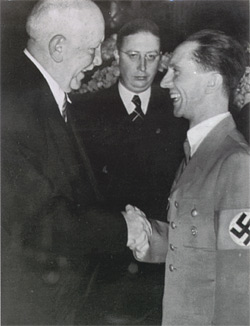|
The origins of magnetic recording date back to the late 19th Century. Inventions of Edison and Oberlin Smith in the US and Valdemar Poulsen in Denmark laid its foundation. However, the technology to put these inventions into practical use (in particular for playback of recorded material) had to wait at least another 30 years.
 Most of this development took place in Germany between the two World Wars. Fritz Pfleumer, a chemist working in Dresden, in 1928 patented paper tape coated with steel powder for magnetic recording. AEG introduced the first commercial tape recorder, the "Magnetophon K 1" at the Berlin Radio Exhibition in 1935. Two Reichsrundfunk Gesellschaft (German Radio) engineers, Otto von Braurmuhl and Walter Weber, found that mixing a very high frequency signal with the audio during recording, vastly improved the quality. Most of this development took place in Germany between the two World Wars. Fritz Pfleumer, a chemist working in Dresden, in 1928 patented paper tape coated with steel powder for magnetic recording. AEG introduced the first commercial tape recorder, the "Magnetophon K 1" at the Berlin Radio Exhibition in 1935. Two Reichsrundfunk Gesellschaft (German Radio) engineers, Otto von Braurmuhl and Walter Weber, found that mixing a very high frequency signal with the audio during recording, vastly improved the quality.
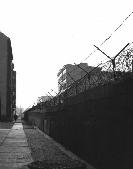 Fritz Schröter, a director of AEG, was active with Pfleumer in developing coated-plastic tape in collaboration with BASF. The reproduced signals were sufficiently good that it became difficult to tell them from the live broadcast performances. Sound recording on coated-plastic tape was improved during the war to the point where Adolf Hitler's radio broadcasts, replayed from AEG Magnetophon equipment, no longer indicated his location. It was also possible to air the identical concert at the same hour from several stations; listeners (the Allies in particular) wondered how it was being done. Thus German tape recording technology during the World War II era was capable of making recordings of considerable fidelity. Several Magnetophon recorders left Germany as reparations in 1945 and influenced tape recording technology throughout the world thereafter. Fritz Schröter, a director of AEG, was active with Pfleumer in developing coated-plastic tape in collaboration with BASF. The reproduced signals were sufficiently good that it became difficult to tell them from the live broadcast performances. Sound recording on coated-plastic tape was improved during the war to the point where Adolf Hitler's radio broadcasts, replayed from AEG Magnetophon equipment, no longer indicated his location. It was also possible to air the identical concert at the same hour from several stations; listeners (the Allies in particular) wondered how it was being done. Thus German tape recording technology during the World War II era was capable of making recordings of considerable fidelity. Several Magnetophon recorders left Germany as reparations in 1945 and influenced tape recording technology throughout the world thereafter.
_100.jpg) Urania Records in the 1950s based much of its catalogue on recordings of German origin. The company had close connections with both West and East German Radio after the war, and many of their LP recordings consisted of post-war radio recordings. So the release of Draeseke’s Symphonia Tragica in 1955 by “The Berlin Symphony and Hermann Desser” could well be taken at face value as an early 1950s recording by an undistinguished conductor originating from an East or West Berlin radio studio. Urania Records in the 1950s based much of its catalogue on recordings of German origin. The company had close connections with both West and East German Radio after the war, and many of their LP recordings consisted of post-war radio recordings. So the release of Draeseke’s Symphonia Tragica in 1955 by “The Berlin Symphony and Hermann Desser” could well be taken at face value as an early 1950s recording by an undistinguished conductor originating from an East or West Berlin radio studio.
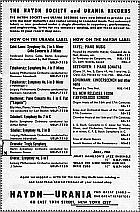 However, some portions of the Urania Catalogue were recorded during the course of World War II. A 1944 recording of Beethoven's Eroica Symphony under Furtwängler was issued by Urania in the USA and in France. That performance was a Vienna Radio production (Reichssender Wien) and the Urania release, without the conductors consent, was the basis of lawsuits filed against Urania. The pianist, Walter Gieseking, was involved in similar litigation [Gieseking, 155 N.Y.S.2d 171 (N.Y. Sup. Ct. 1956)]. Urania claimed to have an exclusive and legitimate licensing from East Berlin Radio, which allowed it to use material dating from as early as 1939. Nonetheless, the chaotic conditions of post-war Germany allowed several radio archives to be heavily pilfered by entrepreneurs. However, some portions of the Urania Catalogue were recorded during the course of World War II. A 1944 recording of Beethoven's Eroica Symphony under Furtwängler was issued by Urania in the USA and in France. That performance was a Vienna Radio production (Reichssender Wien) and the Urania release, without the conductors consent, was the basis of lawsuits filed against Urania. The pianist, Walter Gieseking, was involved in similar litigation [Gieseking, 155 N.Y.S.2d 171 (N.Y. Sup. Ct. 1956)]. Urania claimed to have an exclusive and legitimate licensing from East Berlin Radio, which allowed it to use material dating from as early as 1939. Nonetheless, the chaotic conditions of post-war Germany allowed several radio archives to be heavily pilfered by entrepreneurs.
Thus the 1955 release of Draeseke’s Symphonia Tragica could well have had its source from over a decade earlier.
In 1936, Joseph Goebbels appointed conductor Heinz Drewes, the Generalmusikdirektor of Altenburg and an influential member of the Nazi party, to head a department of music in the Propaganda Ministry. Dr. Drewes new position made him second only to Peter Raabe - who succeeded Richard Strauss as President - of the Reichsmusikkammer. Though Michael Kater (The Twisted Muse, Oxford University Press [1997]) notes that the responsibilities of Raabe and Drewes were sufficiently entangled that it is difficult to sort out who wielded the most power. Kater notes that near the end of 1943 that it was Drewes whom Goebbels credited with having revived Berlin's musical scene after a year of severe air attacks.
After denazification proceedings, Drewes was employed at the Nuremberg Conservatory. Eventually a story emerged that anytime during the Third Reich that Drewes conducted - and it was evidently only with the radio orchestras - he used a pseudonym, due to his high profile in the régime. Small wonder, Drewes was personally responsible for who got hired or fired in the orchestras of the Reich. Alternatively, this pseudonym could have been a post-war convenience for Urania and all involved.
When the Varese-Sarabande re-release of this recording appeared in 1979, someone who claimed that he had been associated with Urania insisted that the performers were actually Hans von Benda and the Bamberg Symphony, further muddying the waters.
In 1996, in his presentation at the “Wagnerian Symphony Conference” marking the centennial of the death of Anton Bruckner, Alan Krueck first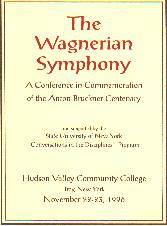 revealed the likely identity of Heinz Drewes as the true conductor and its 1942 origins. Christoph Schlueren also identifies Drewes as the conductor in his notes to the first commercial digital recording of Symphonia Tragica on cpo released in 2000. revealed the likely identity of Heinz Drewes as the true conductor and its 1942 origins. Christoph Schlueren also identifies Drewes as the conductor in his notes to the first commercial digital recording of Symphonia Tragica on cpo released in 2000.
Krueck based his conclusions on personal contacts with individuals at the Nuremberg Conservatory; the fact that a German conductor by the name of Hermann Desser never existed; the quality of the recording, while quite remarkable for 1942, was consistent with that achievable at the time; the work is by a composer who fits all too well into the cultural climate of the Third Reich and a performance was more likely during the war, rather than the immediate post-war period.
After over seventy years, this recording continues to live on with a 2010 transfer of a pressing of the Urania LP to the Naxos Classical Archive digital download.
, Alan Krueck,webmaster@draeseke.org |
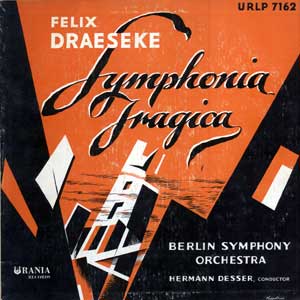
 Most of this development took place in Germany between the two World Wars. Fritz Pfleumer, a chemist working in Dresden, in 1928 patented paper tape coated with steel powder for magnetic recording. AEG introduced the first commercial tape recorder, the "Magnetophon K 1" at the Berlin Radio Exhibition in 1935. Two Reichsrundfunk Gesellschaft (German Radio) engineers, Otto von Braurmuhl and Walter Weber, found that mixing a very high frequency signal with the audio during recording, vastly improved the quality.
Most of this development took place in Germany between the two World Wars. Fritz Pfleumer, a chemist working in Dresden, in 1928 patented paper tape coated with steel powder for magnetic recording. AEG introduced the first commercial tape recorder, the "Magnetophon K 1" at the Berlin Radio Exhibition in 1935. Two Reichsrundfunk Gesellschaft (German Radio) engineers, Otto von Braurmuhl and Walter Weber, found that mixing a very high frequency signal with the audio during recording, vastly improved the quality. Fritz Schröter, a director of AEG, was active with Pfleumer in developing coated-plastic tape in collaboration with
Fritz Schröter, a director of AEG, was active with Pfleumer in developing coated-plastic tape in collaboration with _100.jpg)

